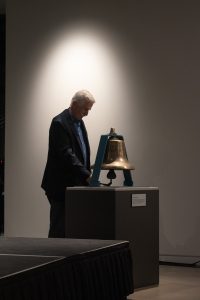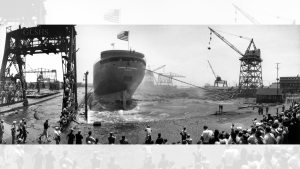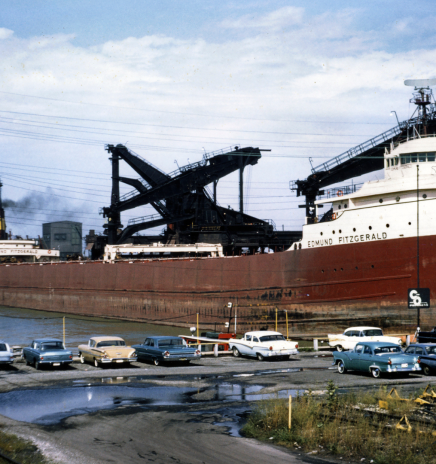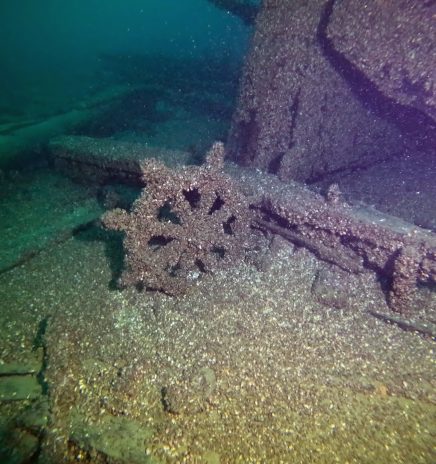50th Anniversary of the Sinking of the SS Edmund Fitzgerald
To commemorate the 50th anniversary, the Great Lakes Shipwreck Historical Society held a memorial ceremony on Whitefish Point on November 10. Family and friends attended the ceremony to honor the crew members who lost their lives. Tom Walton, who worked on the Edmund Fitzgerald and lost his uncle in the 1975 tragedy, rang the bell during a ceremony.

The Fitzgerald was launched on June 7, 1958, in River Rouge, Michigan. At that time, the vessel was the largest ship on the Great Lakes. For 17 years, the 730-foot-long vessel carried taconite from Silver Bay, Minnesota, to steel mills on the lower lakes in the Detroit and Toledo areas. On November 9, 1975, the Fitzgerald was to transport a load of taconite from Superior, Wisconsin, to Zug Island, Detroit, Michigan.

Improved Vessel Safety
Since the sinking of the SS Edmund Fitzgerald, ship safety on the Great Lakes has improved through advances in weather forecasting, maintenance and inspections and vessel construction. Richard Mueller, president and CEO of maritime engineering firm NETSCo, said ships are now constructed with improved hull strength, materials and watertight hatch covers with improved clamping mechanisms to withstand severe weather. “The Edmund Fitzgerald has become an iconic story in Great Lakes maritime history because of the ship’s rapid disappearance, with no distress signal, which was of great public concern,” he said.
Mueller said the sinking resulted in significant changes in the policies and procedures in the maritime industry. “The U.S. Coast Guard (USCG) rescinded the 1973 Load Line Regulation amendment (which had allowed for lower freeboards) for Great Lakes ships because the reduced freeboard had been identified as a contributory factor in the loss of reserve buoyancy by the National Transportation Safety Board (NTSB),” he said. “Also, according to the NTSB, flooding of ballast tanks and the tunnel and inadequate alerts of flooding led to the sinking, and so water level and water ingress sensors were added.”
The USCG also implemented stricter inspection and maintenance requirements and stronger Load Line and hatch cover regulations. Mueller said within a few years after the sinking of the Fitzgerald, the USGC required emergency position-indicating radio beacons (EPIRBs), life rafts and immersion suits on all commercial vessels.
Advanced Weather Warning
Navigating through powerful storms on the Great Lakes will always be a challenge for ship captains and crew. In the last five decades since the sinking of the Fitzgerald, the Great Lakes weather warning system has been upgraded, and real-time storm warnings help ships avoid dangerous conditions. Mueller said that GPS and digital navigation systems have replaced older, less reliable (often manual) tools, and updated communication systems like satellite and the Global Maritime Distress and Safety System (GMDSS) ensure better contact with the USCG.
Images courtesy of the Great Lakes Shipwreck Museum

50th Anniversary of the Sinking of the SS Edmund Fitzgerald
It has been 50 years since the tragic sinking of the SS Edmund Fitzgerald on Lake Superior. On November 10, 1975, the Great Lakes freighter sank during a storm just... Read More

Wreckage of F.J. King Found After 139 Years
The Wisconsin Underwater Archeology Association (WUAA) has announced the discovery of the long-sought wreck of the schooner F.J. King, which sank in a storm off Baileys Harbor, Wisconsin, on September... Read More



